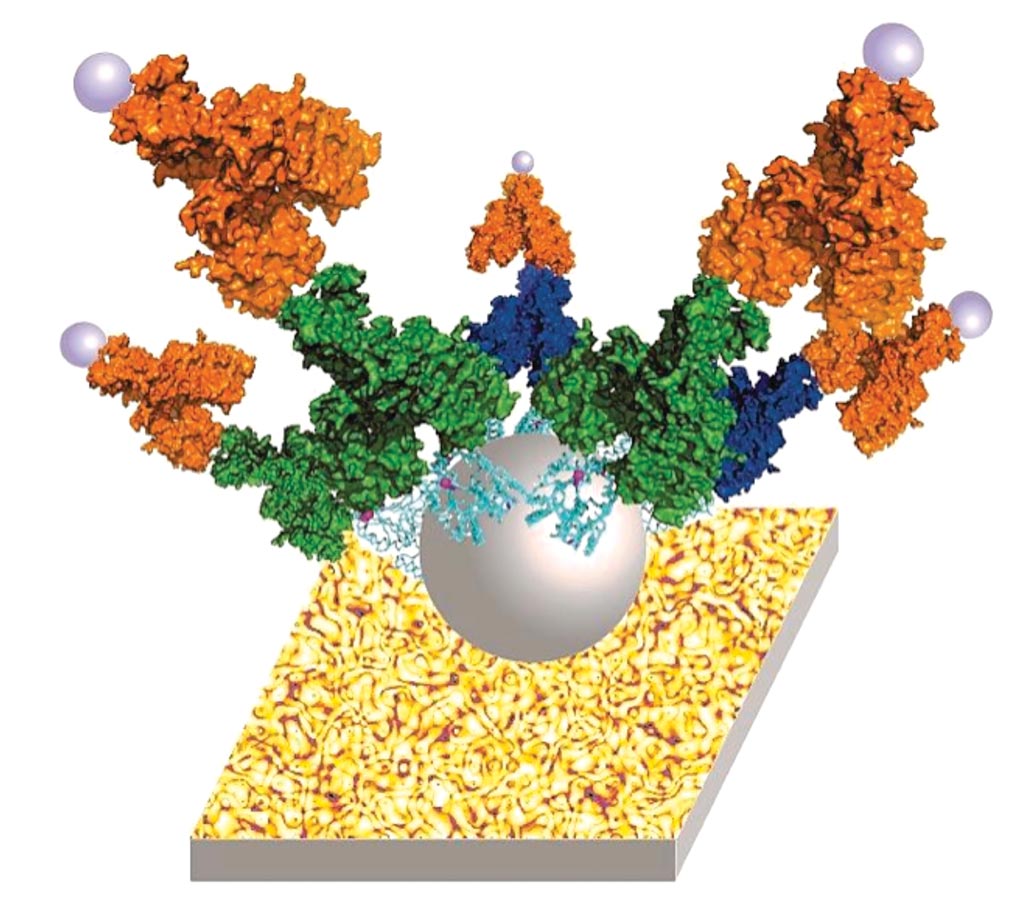Pancreatic Proteins Increase Sensitivity of Type 1 Diabetes Tests
By LabMedica International staff writers
Posted on 27 Sep 2017
There are approximately 29.1 million people living with diabetes and about 18,000 children in the USA are diagnosed with type 1 diabetes, with diagnoses peaking around the age of 14. The disease is controllable with insulin injections, pumps and constant blood sugar testing.Posted on 27 Sep 2017
A novel antibody detection technology has been developed that holds promise for improving the accuracy of diagnostic tests for type 1 diabetes in young children and making population wide screening practical. The technology could help clinicians catch the disorder earlier in life before symptoms such as sudden weight loss, extreme hunger, blurred vision and complications such as hyperglycemia, ketoacidosis and nerve damage occur.

Image: An illustration of the ZnT8 protein imbedded in a fatty membrane and attached to the P-Gold Assay (Photo courtesy of Dr. Dax Fu).
Scientists at Johns Hopkins School of Medicine (Baltimore, MD, USA) and their colleagues from other institutions developed the technology enables screening for more autoimmune antibodies implicated in type 1 diabetes than current tests by incorporating a full-length pancreatic protein, called the pancreatic zinc transport 8 (ZnT8), that is targeted for autoimmune attack in people with the disease. By improving the accuracy of this test, the teams hope to catch the disease earlier and extend testing to all people.
To create the structure, the team needed to produce large amounts of the ZnT8 protein, and they did so by inserting a short sequence of DNA, called a plasmid, encoding the gene for ZnT8 into a protein production host derived from human embryonic kidney cells in the laboratory. They then isolated the protein from the cells and inserted it into the membrane and tested the efficacy of the structure for detecting the autoimmune antibodies that recognize ZnT8 on a highly sensitive assay, known as a nanostructured, plasmonic near-infrared fluorescence enhancing pGOLD.
Multiplexed assays using pGOLD were also developed for simultaneous detection of ZnT8A, islet antigen 2 autoantibody, and glutamic acid decarboxylase autoantibody for diagnosing T1D. The group evaluated 307 human blood samples using this test, 138 from type 1 diabetes patients and 169 from healthy individuals. The test correctly identified 76% of the samples from type 1 diabetes patients and accurately identified 97% of patients without the disease, making it one of the best assays for ZnT8 autoantibodies to date.
Hao Wan, PhD, a postdoctoral fellow at Stanford University (Stanford, CA, USA) and first author of the paper, said, “The pGOLD-based assay demonstrates superior sensitivity and high-throughput ability with a much lower sample requirement compared to the existing clinical tests. The new technology will ultimately be combined with current tests to reach the critical 99% accuracy to begin implementing type 1 diabetes tests across the entire population.” The study was published on September 5, 2017, in the journal Proceedings of the National Academy of Sciences.
Related Links:
Johns Hopkins School of Medicine
Stanford University














